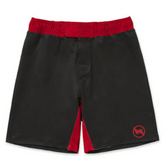How and Why BJJ Fighters Tape Their Fingers: A Complete Guide
Brazilian Jiu Jitsu (BJJ) is a combat sport. BJJ is as much about technique and leverage as it is about durability and physical conditioning. It does not matter whether you train in Gi or No-Gi BJJ. One thing remains constant—your hands, especially your fingers, take a beating. That’s why taping fingers has become a ritual for many BJJ practitioners, from white belts to seasoned black belts. But why do BJJ fighters tape their fingers? How should you tape them correctly? And what benefits does finger taping offer?
In this comprehensive guide, we break down everything you need to know about finger taping in BJJ. This article will explore from its purpose and technique to common mistakes and the best tape options for Brazilian Jiu Jitsu athletes.
Why Do BJJ Fighters Tape Their Fingers?
1- Grip Protection in BJJ Gi Training
In Gi BJJ, gripping the opponent’s collar, sleeves and pants is a fundamental part of the game. Over time, this constant gripping places significant stress on the small joints, tendons and ligaments in the fingers. Taping provides external support that helps reduce strain during intense BJJ Gi sessions.
2- Preventing Finger Injuries
Taping helps prevent common injuries in Brazilian Jiu Jitsu like:
- Sprained fingers
- Tendonitis
- Dislocated knuckles
- Ligament tears
By keeping the joints stable, tape reduces the chances of fingers getting bent the wrong way during a scramble or grip fight.
3- Supporting Existing Injuries
If you are already nursing a finger injury, taping is essential to continue training safely. It minimizes further damage while allowing limited mobility. Many No-Gi BJJ athletes’ tape injured fingers even if gripping is not a central part of their game.
4- Improved Grip Strength and Endurance
Though it might seem counterintuitive, taping can help improve your grip endurance. With the added structural support, your fingers won’t tire out as fast, especially during Gi BJJ rounds where grip fighting can last the entire roll.
How to Tape Your Fingers for BJJ: Step-by-Step Guide
The method you choose depends on your injury, grip style and personal comfort. Here are the most common and effective BJJ finger taping techniques:
1- X-Taping (Cross Taping)
Best for: Joint support and preventing hyperextension
How to do X-Taping (Cross Taping):
- Start taping at the base of your finger
- Wrap diagonally over the joint (like an “X”)
- Repeat the process from the other side to complete the X
- Anchor the tape above and below the knuckle
- This method stabilizes the joint while still allowing for some mobility.
2- Buddy Taping (Two-Finger Taping)
Best for: Stabilizing an injured finger using a healthy one
How to do Buddy Taping (Two-Finger Taping):
- Place the injured finger next to a healthy finger
- Wrap tape around both fingers together at the base and near the top
- Avoid wrapping too tight—it should restrict movement but not cut circulation
- This technique distributes the strain across two fingers. Thus, making it ideal for serious sprains or healing dislocations.
3- Single Joint Taping
Best for: Light protection or minor joint soreness
How to do Single Joint Taping:
- Wrap tape around the joint (usually the middle one)
- You can apply multiple wraps for increased thickness
- Do not wrap too tightly
- This is a minimalist approach for minor aches and strains from repetitive training.
Choosing the Best Finger Tape for Brazilian Jiu Jitsu
Not all athletic tape is created equal. For BJJ finger taping, here is what you should look for:
Width
The ideal width is 0.3 to 0.5 inches. This size fits comfortably around fingers without needing to cut larger strips.
Adhesion
Strong, sweat-resistant adhesive is crucial. Your hands sweat heavily during rolling—low-quality tape will slip or unravel.
Flexibility and Durability
The tape should offer some stretch but maintain structural integrity under pressure. BJJ involves a lot of movement and rigid tape may hinder performance.
Top Brands Preferred by BJJ Practitioners:
- Monkey Tape
- Gold BJJ Tape
- TapeArmor
- Johnson & Johnson Coach Tape (cut to size)
When Should You Start Taping Fingers?
Many beginners in Brazilian Jiu Jitsu wonder if they should start taping right away. Here is a general rule:
- New BJJ athletes (white belts): Focus first on proper grip techniques. Do not rely on tape unless you are dealing with pain or discomfort.
- Intermediate/Advanced BJJ practitioners: Taping becomes essential as rolling volume increases. Most Gi BJJ athletes tape regularly.
Taping in Gi vs. No-Gi BJJ
BJJ Gi Training:
Finger taping is far more common in Gi training due to the grip-heavy nature of the game. Repeated gripping of collars and sleeves often leads to “BJJ fingers”. It is a term used to describe swollen, misshapen joints from overuse.
No-Gi BJJ Training:
Less emphasis on finger taping since grips are typically on limbs, necks or through body locks. However, practitioners with previous injuries still benefit from taping to protect their fingers during scrambles or submissions.
Common Mistakes to Avoid
Taping Too Tight
This can cut off circulation and cause numbness. Your fingers should stay pink and mobile after taping.
Using Cheap or Non-Specific Tape
Regular sports tape often does not stick well under sweaty, high-friction conditions. Use BJJ-specific finger tape for best results.
Neglecting the Root Cause
Taping is a support tool—not a cure. Do not ignore pain. Consult a medical professional if your fingers are persistently sore or swollen.
Inconsistent Taping Techniques
Stick to what works for you and stay consistent. Changing taping styles too often can lead to uneven pressure and reduced effectiveness.
Long-Term Finger Health for BJJ Athletes
While taping is helpful, you should also adopt other habits to maintain healthy fingers in Brazilian Jiu Jitsu:
- Warm-up your hands before training
- Stretch and massage fingers post-training
- Use finger-strengthening tools like grip trainers or rubber bands
- Listen to your body—rest when needed
Taking care of your hands ensures longevity in BJJ, especially if you are training multiple times a week in both Gi and No-Gi formats.
Final Thoughts: Should You Tape Your Fingers in BJJ?
If you train Brazilian Jiu Jitsu, especially in the BJJ Gi, finger taping is more than just a trend. It is a performance and safety essential. It helps prevent injuries, supports damaged joints and allows you to roll with confidence. It does not matter whether you are a beginner BJJ white belt or a seasoned competitor. Learning how to tape your fingers properly can significantly improve your longevity on the mats.
So, grab some quality BJJ finger tape, experiment with techniques and keep your grips strong, your fingers safe and your Jiu Jitsu game evolving.





